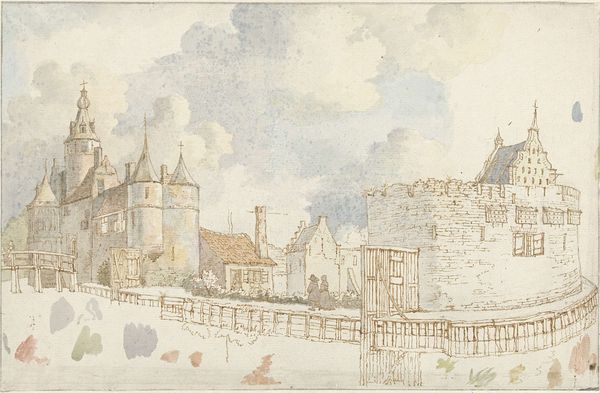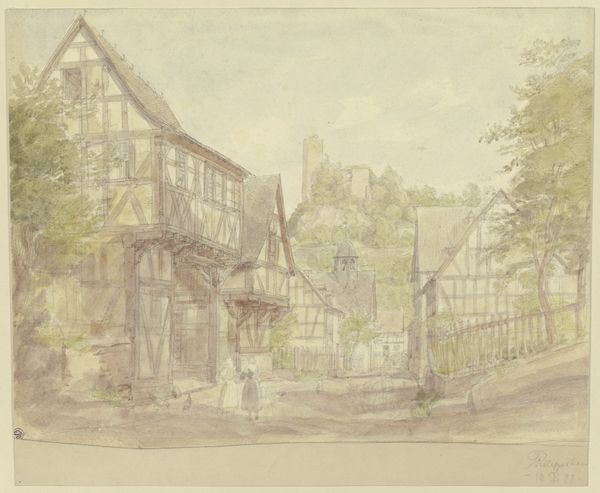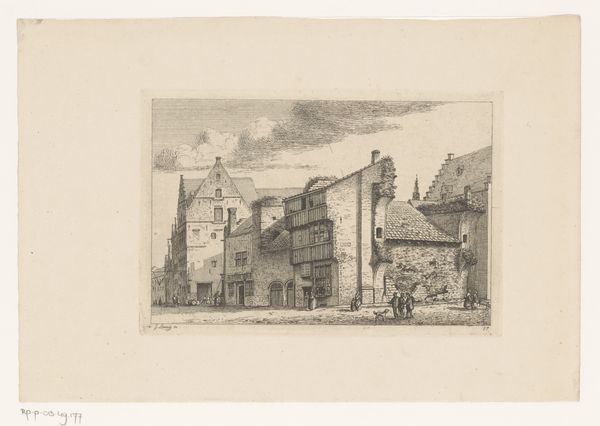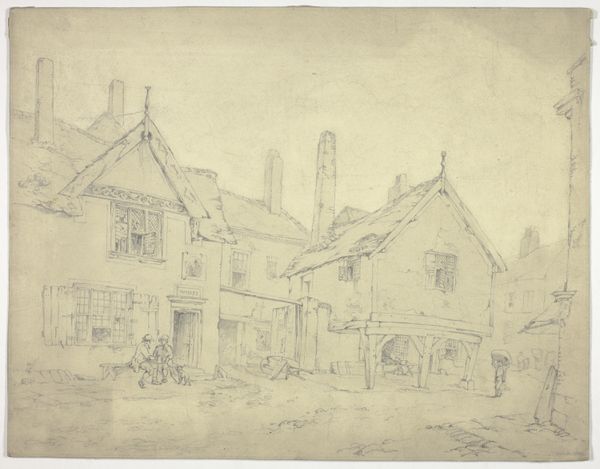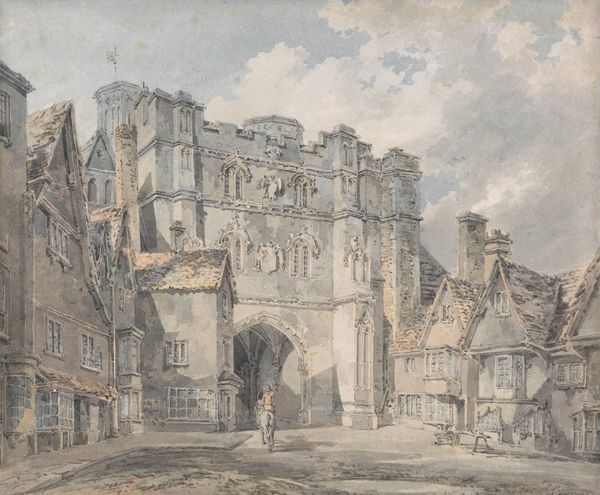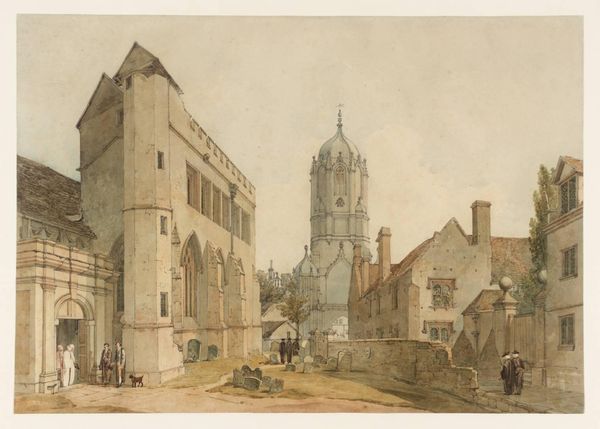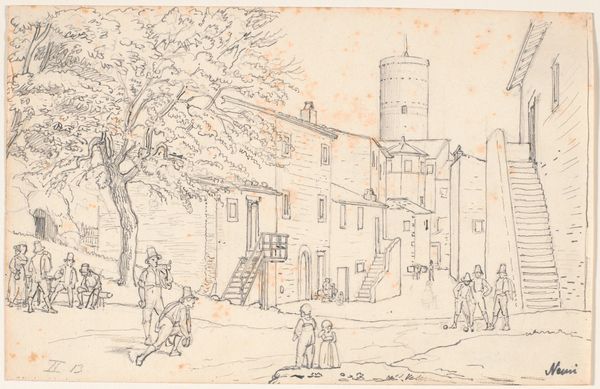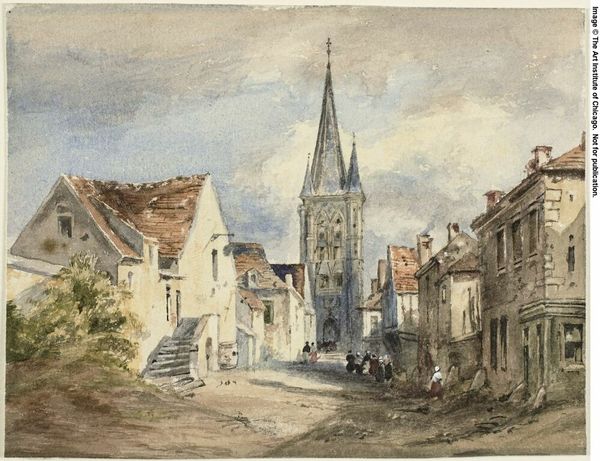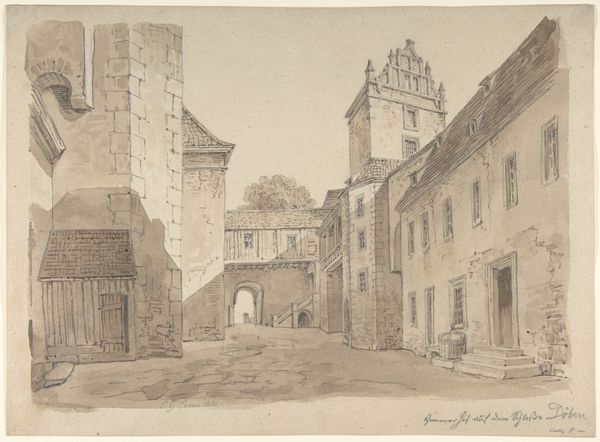
drawing, watercolor
#
drawing
#
landscape
#
watercolor
#
romanticism
#
cityscape
#
watercolor
Dimensions: 4 3/4 x 6 11/16 in. (12.07 x 16.99 cm) (image)
Copyright: Public Domain
Curator: This watercolor and drawing, titled "Monk Bar," was completed around 1830 by R. Mulholland. You can find it here at the Minneapolis Institute of Art. Editor: My first impression is one of transience and a kind of serene decay. The light is so diffused, making the building in the back look ghostly. There's almost a romantic sensibility in its ruin. Curator: Indeed. Monk Bar, as a fortified gate, served as a powerful symbol of the city's authority and protection. Watercolors as a medium often hint at a sense of nostalgia, invoking the past with a tinge of longing. In the context of Romanticism, the ruins stand for continuity with cultural memories. Editor: Looking closer, the daily life in front of the old bar gate catches my attention. I am struck by the way Mulholland contrasted the monumentality with mundane things. The artist paid such attention to carts, people working, and wooden sheds propped up on the foreground. What do you think this suggests about how the work may be perceived by a potential patron? Curator: It is true that the painting contains contrasts, a tension between a heroic past and ordinary life. Perhaps Mulholland was offering his audience a reflection on the evolving character of a place, showing how the weight of history presses upon everyday existence. It tells us the present always exists as a continuation, literally and figuratively, from its own rich, multi-layered ground. Editor: I wonder about the artist’s investment in the work needed to paint something like this. You get the feeling that the landscape is experienced, encountered on site rather than reconstructed as an idea. It seems there is also a commitment to documenting these rapidly changing conditions, and almost a premonition about urbanization. Curator: Perhaps there’s a message that even in a landscape altered by time and labor, symbolic power endures, transformed but never entirely lost. Editor: Absolutely. In essence, we have two planes of existence—one material, one ideal— captured with layered, but subtle use of color. Curator: It's a delicate rendering that truly evokes a sense of history layered onto the everyday. Editor: I agree, Mulholland’s artwork here creates an evocative record for its time.
Comments
minneapolisinstituteofart almost 2 years ago
⋮
Since Roman times, York has been a walled city. The gates in its fortifications are called “bars.” Here we see Monk Bar, the most impressive one, from outside the wall. Started in the 1300s and achieving its full height in 1478, each of its four levels facilitated defensive actions against intruders, from shooting arrows, to raining down boiling water, to dropping the giant portcullis (gate) that can still seal the entrance in an instant. The stone sculptures at the very top represent soldiers hurling boulders. Since such gates were often the point of tax collection and since some dangerous professions (especially those involving open fire) were often banned within the walls, small businesses often popped up just outside the gates. Clearly the artist found these ramshackle buildings at least as interesting as the mighty bar. Unfortunately, we have found no information about the artist who inscribed his name on the back of this skillfully executed watercolor.
Join the conversation
Join millions of artists and users on Artera today and experience the ultimate creative platform.
